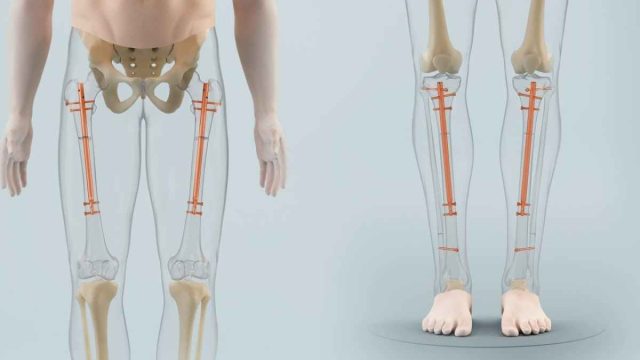Understanding the intricacies of limb lengthening surgery is paramount for anyone contemplating this significant medical intervention. This article will guide you through the comprehensive journey of determining if you require this specialized surgical procedure.
Understanding Limb Discrepancy
Contents [show]
Limb discrepancy is a noticeable difference in limb length, which can stem from congenital conditions, growth plate injuries, or infections. You may identify symptoms such as visual imbalance, difficulty in movement, and persistent pain and discomfort, signaling the need for medical evaluation.
Who Needs Limb Lengthening Surgery?
Determining if you’re a candidate involves a thorough clinical assessment and advanced imaging techniques. Ideal candidates are those with medical conditions warranting surgery understanding the limitations and inherent risks of the procedure.
Preliminary Consultation
Choosing a qualified orthopedic surgeon is a crucial step. Look for credible credentials, seek referrals, and peruse reviews. During the consultation, expect a comprehensive review of your medical history, a meticulous physical examination, and a transparent discussion of your treatment options.
Pre-Surgical Assessment
Undergoing required medical tests, including blood and imaging studies, forms the basis of pre-surgical assessment. A psychological evaluation ensures you’re mentally prepared and have set realistic expectations for the surgical outcome.
The Surgical Procedure
Familiarize yourself with the preoperative preparations and the diverse surgical techniques employed. Awareness of the common risks and strategies to address potential complications is essential for informed consent and preparation.
Post-Surgical Care and Rehabilitation
Effective post-surgical care encompasses pain management and wound care. Embracing the rehabilitation process through physical and occupational therapy is vital for optimizing the functionality of the lengthened limb.
Measuring Surgical Success
Assessing the success of limb lengthening surgery goes beyond just the visible improvement in limb length. It encompasses various physical and psychological well-being facets, collectively contributing to the overall quality of life post-surgery.
. Range of Motion
A vital indicator of surgical success is the restored range of motion in the treated limb. You will undergo several tests post-surgery to evaluate the flexibility, mobility, and overall function of the limb. Regular assessments over time will track improvements and identify any potential issues that may need further intervention.
. Strength and Stability
Equally important is the restored strength and stability of the limb. You will work on rebuilding muscle strength around the lengthened area through gradual and supervised exercise routines. The ability to bear weight and perform daily activities without discomfort is a positive sign of recovery and surgical success.
. Psychological Well-being
The psychological impact of limb lengthening surgery cannot be understated. It’s crucial to assess your mental and emotional well-being post-surgery. Feelings of increased confidence, reduced anxiety, and overall satisfaction with the surgical outcomes indicate successful surgery. Access to counseling and support groups can further facilitate this aspect of recovery.
. Return to Normal Activities
A significant measure of success is your ability to return to regular activities and routines. This includes participating in recreational activities, resuming work or school, and engaging in social interactions. The timeline for this return can vary, but gradual reintegration and achieving pre-surgery independence signals a successful outcome.
Patient Satisfaction and Expectation Alignment
Your satisfaction with the results and the alignment of outcomes with pre-surgery expectations are crucial. Open communication with your medical team throughout the recovery process can help manage expectations and address any concerns. A fulfilled patient whose expectations are met or exceeded is often the best indicator of surgical success.
Monitoring long-term health outcomes and managing any complications is fundamental in measuring success. Regular follow-up appointments, imaging studies, and ongoing communication with your orthopedic surgeon ensure the limb remains healthy, functional, and complications-free.
Estimating the cost involves considering various factors and obtaining a price quote. Navigating the insurance approval process and understanding out-of-pocket expenses are essential for financial planning and ensuring access to required care.
Deciding on limb lengthening surgery is a profound choice that demands careful consideration and comprehensive understanding. We hope this article has illuminated the pathway, providing you with the essential knowledge and guidance to make an informed decision. Always consult medical professionals and consider your unique circumstances before making significant healthcare decisions.


